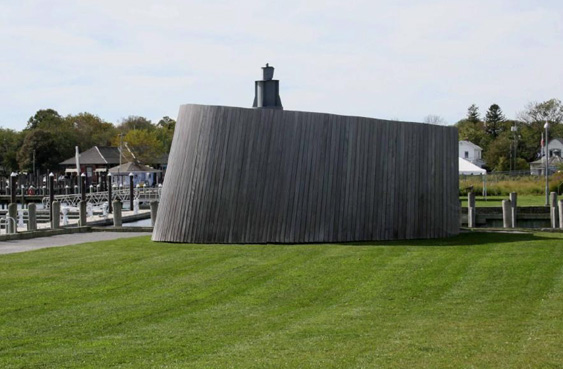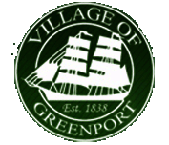- GENERAL INFORMATION
- CLERK'S OFFICE
- AGENDAS
- MINUTES
- TREASURER'S OFFICE
- BUILDING DEPARTMENT
- CODE ENFORCEMENT
- HISTORIC PRESERVATION COMMISSION

CAMERA OBSCURA
Open Saturdays and Sundays 10 a.m. to 12 p.m.
Open other times as listed here: https://www.instagram.com/camera_obscura_greenport/
For additional appointment times, please contact the Village Hall at 631-477-0248.
Want to help?
Volunteer docents are needed to help operate Greenport's Camera Obscura.
We simply ask for an hour or two commitment once or twice a month. No training is necessary, but we'll provide volunteers with the basics so you can answer most visitors' questions.
Contact ldougherty@greenportvillage.org, community service hours are
available.
Long Island's camera obscura is located in its own building near the Marina at Mitchell Park on Front Street in Greenport. Admission by donation.
A camera obscura is a darkened room into which light enters through a small opening, projecting a live picture onto a screen. In a modern version, the view outside is reflected by a mirror through a lens, which projects it onto a viewing table. Looking down at the table one sees a living, two-dimensional image of the outside scene, in full color. The mirror can be rotated, so that, as it turns, one sees the view in all directions. The vibrant image promotes a feeling of serene detachment, reveals details otherwise overlooked, and enhances one's appreciation of the scenic beauty. Many viewers find the experience deeply moving, and almost all are fascinated by this magical new way of seeing.
Although images formed by pinholes were known to the ancients, the discovery of lenses in the 15th century made it possible to obtain a bright and clear picture. The camera obscura reached its height of popularity in the 18th & 19th centuries, both as an amusement and as a drawing aid for artists. Vermeer, Canaletto and Joshua Reynolds are known to have used one. During the 19th century, there were hundreds in existence, but with the invention of photography in 1839, camera obscuras slowly disappeared. In recent years, there has been a revival of interest.
Today there are approximately fifty public camera obscuras in the world.
SOME HISTORY...
- 5th C BC, Chinese philosopher Mo Ti records pinhole observations.
- 4th C BC, Aristotle notes “camera obscura” projections through leaves
of a tree during solar eclipse. - 11th C AD Arab scientist Alazen observes pinhole images to study
properties of light. - 15th C Leonardo DaVinci experiments with camera obscura.
- 16th C Giovanni Battista delia Porta popularizes the camera obscura.
- 1606 First image of a portable camera obscura published.
- 1631 Camera obscura used to observe transit of Mercury.
- 17th C Vermeer uses camera obscura as drawing aid.
- 18th C Cantaletto uses camera obscura for his paintings in Venice.
- Early 19th C Camera obscura becomes popular as entertainment.
Many are constructed, especially in the British Isles. - Late 19th C Invention of photography results in gradual
disappearance of camera obscuras.
SEARCH OUR WEBSITE
COMMUNITY NEWS & EVENTS
PUBLIC SERVICE ANNOUNCEMENTS
Please be aware that there is a "phone scam" regarding the Village of Greenport Utilities, specifically electric. The Village Office phone number is: 477-0248, to report suspicious activity, and also to be noted as a call-back reference number.
HURRICANE PREPAREDNESS
MAYOR
KEVIN STUESSI
TRUSTEES
PATRICK BRENNAN
DEPUTY MAYOR
LILY DOUGHERTY-JOHNSON
JULIA ROBINS
MARY BESS PHILLIPS
TREASURER
ADAM BRAUTIGAM
Ext. 217
VILLAGE CLERK
CANDACE HALL
Ext. 214
